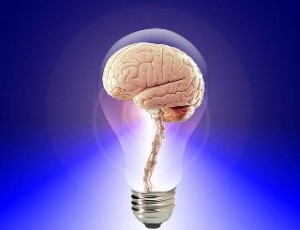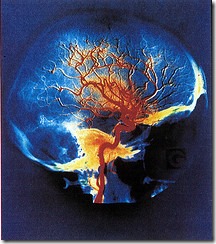
40 strange and fascinating facts about the brain. Designed to excite your interest in the most fascinating organ we own.
These facts about the brain just might one day come in handy for you:
– at trivia nights,
– to liven up boring dinner conversations
– impress onlookers with your superb knowledge
– or just to help understanding of the brain.
Remembering that anything to do with the brain can change as we keep discovering more. So ‘facts’ that may or may not be exactly that … facts!
These facts also provide insights into the complexity of the brain and its function.
What Do Fascinating Facts About the Brain Have to Do With Brain Injury?
[unordered_list style=”tick”]
- It reminds us how AMAZING our brain is. Which hopefully reminds us to look after it
- These many and random facts can help us understand the amount the brain controls; which is everything we do – physical, sensory, emotional, cognitive and more
- It reinforces how complex the brain and therefore brain injury is. Complex and different in each person.
- The more understanding about the brain the better we can manage the outcomes – if reading about it in bite-sized facts helps then keep reading.
- Helps you figure out what outcomes might be expected – according to the area of brain damaged.
[/unordered_list]
So here you have 40 facts about the brain and some additional resources if you want more:
Baby Brain Facts:

1. Neurons multiply at the rapid rate of 250,000 neurons per minute during early preganancy. (NeuroScience for Kids)
2. During the first few weeks of life, a babbling baby utters almost every sound of every known language. Later, the ability to make some sounds vanishes, which is a case of neural pruning. (Random History quoting McDonald, Ann. “Prenatal Development–The Dana Guide.)” The DANA Foundation. November 2007. Accessed: November 17, 2011.)
3. The metabolism of a baby’s brain, …builds steadily from birth until the age of 3. At that point, your child’s brain is more than twice as active as an adult, and it will remain so until he or she reaches puberty. (Dana Guide)
4. The first sense to develop while in utero is the sense of touch. The lips and cheeks can experience touch at about 8 weeks, and the rest of the body around 12 weeks.
5. The neural networks that are used grow stronger; those that are not wither away. This process is known as pruning. From birth until about 3 years the growth of connections is more than pruning of networks. Up until 10 years the growth is balanced with pruning and through puberty the balance changes and pruning is more than new connections.(Dana Guide)
6. Our brain stops growing in late adolescence – at about 18 years.

It’s a Chemical Thing:
7. Our thinking is done with the use of electricity and chemicals.
8. There are more than 100,000 chemical reactions happening in the human brain every second.
9. Your brain generates enough electricity to power a 10 watt lightbulb. Kids National Geographic
9. Eating chocolate increases the levels of endorphins released into the brain, giving credence to the claim that chocolate is a comfort food. The endorphins work to lessen pain and decrease stress. (Coveleskie, Kristen. Bryn Mawr College)
The Numbers Game
10. A nerve impulse travels at approximately 320kph. Electricity travels at 17,956,000 km per minute. Neurons send information to your brain at more than 150 miles (241 kilometers) per hour. Kids National Geographic
11. The brain represents only 2% of the body weight, but it uses up to 20% of the body’s energy production. Is the most energy consuming part of your body.(Headway Dorset UK)
12. About 750ml of blood pumps through your brain every minute. (Briozone)
13. The human brain has around 100,000 miles of blood vessels.
14. It is estimated we have approximately 100 billion Neurons that is about 166 times the number of people on the planet (The Thinking Business)
15. Our brain has as many cells as there are stars in the Milky Way. (69 Interesting Facts About . . .)
Brain Facts ‘Discovery Channel’ Style:
16. 1700 B.C. Edwin Smith Surgical Papyrus, contains the first known description of the anatomy of the brain. Egyptian doctors describe “26 different head injuries and treatments, wrinkles and fluids in the brain, its outer wrapping, and even the fluid inside it.” (Cyber museum of Neurosurgery)
17. Over 90% of what we know about the brain has been discovered in the past 10 years (The Thinking Business)
18. 3171 years is about what it would take to count all the cells in the brain. (Neuroscience for Kids) No – I have no idea how they worked this out.
19. Our grey matter grew as we began to eat seafood! As humans developed, it has been found that as our diet expanded to include seafood so did our grey matter in the cerebral cortex. Further research found that the “discovery and subsequent multi-generational exploitation of seafood coincides with the rapid expansion of the cerebral cortex that is unique to modern humans.” (Docosahexaenoic Acid (DHA): An Ancient Nutrient for the Modern Human Brain)
Brain Fact Olympics:

20. 1,000,000,000,000,000 synapses! That is about the number in the human brain. Approximately 1 quadrillion synapses. (Neuroscience for Kids quoting statistic from Changeux, J-P. and Ricoeur, P., What Makes Us Think?, Princeton: Princeton University Press, 2000, p. 78)
21. All neurons lined up side by side would stretch 1000 km. Oh but sorry you couldn’t see it – the line would be only 10 microns wide…invisible to the naked eye! (Neuroscience for Kids)
22. The brain can make 20 million billion calculations per second. A human being has about 100 billion brain cells. Although different neurons fire at different speeds, as a rough estimate a neuron can fire about about 200 times a second. The number of cells each neuron is connected to also varies, but as a rough estimate it is reasonable to say that each neuron connects to 1000 other neurons- so every time a neuron fires, about 1000 other neurons get information about that firing. Multiply all this – we get 100 billion neurons X 200 firings per second X 1000 connections per firing = 20 million billion calculations per second. (Quora.com)
23. The longest Axon in the body travels from the brain to the sacral spinal cord at the base of the spine.
24. The human brain consists of 60% fat, making it one of the fattiest organs in the body.
25. “An interruption of blood flow to the brain for more than 10 seconds causes unconsciousness, and an interruption in flow for more than a few minutes generally results in irreversible brain damage.. “ (Wikipedia quoting Raichle, Marcus (1983))
26. Ben Pridmore memorised 96 historical events in 5 minutes and memorized a single, shuffled deck of cards in 26.28 seconds. You can watch the incredible memorising of cards HERE
A Brain Weighs How Much?
27. The heaviest known normal human brain belonged to the Russian Writer Ivan Turgenev, who died in 1883. His brain weighed 4.43 pounds (2kg), more than a pound heavier than the average male brain. (69 Interesting Facts About . . . from Turkington, Carol. 1996. The Brain Encyclopedia. New York, NY: Checkmark Books.)
28. An elephant’s brain weighs approximately 5kg. An adult human brain weighs approximately 1.5kg (The Human Brain – An Introduction To Its Functional Anatomy, John Nolte PhD, John Sundsten, PhD Mosby, Fifth Edition 2002.)

29. The sperm whale has the worlds heaviest brain – up to 9kg. Average human brain 1.4kg
30. Despite thinking that Einstein’s brain would be larger than average it weighed only 1,230 grams, which is (and was) less than the average adult male brain (about 1,400 grams). The authors also reported that the thickness of Einstein’s cerebral cortex (area 9) was thinner than that of five control brains. (Neuroscience for Kids) …
31. … but it was also shown that Einstein’s brain was 15% wider than the other brains studied because “the region responsible for mathematical thought and the ability to think in terms of space and movement” was enlarged.See more in Why size mattered for Einstein.
32. For a wide range of brain weights in animals see the article “The Human Brain In Numbers” from National Center for Biotechnology Information
Functional Fun Facts:
33. If the Cerebellar cortex was unfolded it would be approximately 1 metre long. (The Human Brain – An Introduction To Its Functional Anatomy, John Nolte PhD, John Sundsten, PhD Mosby, Fifth Edition 2002.)
34. The skull is only as thick as three coins one on top of the other.
35. Humans grow faster at night than they do during the day because a small part of the brain, the pituitary gland, releases a growth hormone at night while a person sleeps.
36. What appears as random bursts of light when people hit their heads is actually caused by a jolt to the brain cells responsible for vision. Stars most often appear following a blow to the back of the head because that is the location of the visual cortex.

37. The sense of smell connects to the part of the brain that also controls emotions and memories. This is why smells often evoke strong memories. (‘Why Can Smells Unlock Memories’ BBC)
38. Brain scientists have identified the cerebellum as the part of the brain that prevents us from tickling ourselves. It helps us distinguish between expected and unexpected sensations.
39. The brain does not have any pain receptors – cells that can sense pain-and consequently, cannot feel pain.
40. Déjà vu (French for “already seen”) has never been fully explained, though some scientists believe that a neurological glitch causes an experience to be registered in the memory before reaching consciousness. Random History quotes Turkington, Carol. 1996. The Brain Encyclopedia. New York, NY: Checkmark Books.
AND FINALLY
RandomHistory.com – “ was created by a team of history enthusiasts dedicated to providing the Web’s best selection of history and facts on random topics”. I like it also because if references the source of quotes. In addition to the quotes included above there is a generous amount of many and varied facts for your consumption at Brain Facts
Neuroscience for Kids – if you ignore the “kids” bit in the title, you will find a wealth of easy to understand information on this site.
2201 Fascinating Facts by David Louis Greenwich House, 1977



A very interesting and well constructed blog post Mel. This is my favourite fact:
11. The brain represents only 2% of the body weight, but it uses up to 20% of the body’s energy production. Is the most energy consuming part of your body.(Headway Dorset UK)
This is why fad diets are so crap. The poor brain!
Great point Sandra Feeding the brain well is often under estimated. Brain and nutrition is a topic I have would like to cover but feel very under qualified to do so – maybe a future topic for a guest expert? Thanks for the reminder.
Pingback: Genius Only Need Apply - A Once in a Lifetime Job -The Brain At Work. - Changed Lives New Journeys
Pingback: A Fun Study With A Serious Side: Traumatic Brain Injury in Asterix Comics - Changed Lives New Journeys
Pingback: MEMORY 101: What is Memory? - Changed Lives New Journeys
Pingback: 5 Fascinating Things About The Brain – Top 5 Post